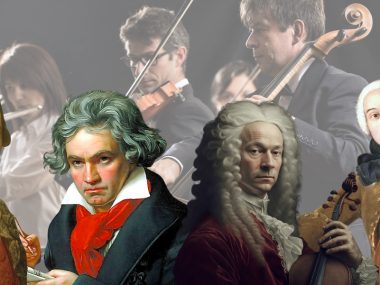The Chinese culture is one of the oldest in human history. Today, the country is one of the largest on the planet and contains a wide variety of regional ethnicities besides the Han Chinese people within its mainland.
Throughout history, Chinese people have been known for their iconic genres of music, whether they’re Traditional, Folk, or others.
In today’s article, we’ll have a closer look at the different types of Chinese music. So without further ado, let’s hop in!
1. Traditional and Folk Chinese Music
Unlike many cultures where music is focused on the beat and rhythm to encourage people to dance or move, Chinese music is mainly designed with the aim of producing a calming effect on the listener.
This is why traditional Chinese music has a noticeable continuous and smooth flow that’s meant to reduce conflict and encourage people to stay productive and obedient.
In most cases, traditional Chinese music is played on a single instrument rather than multiple ones.
Chinese Folk music is mainly the Han people’s music, which is most notably known for the exotic and unique set of instruments used to play it.
In fact, some of the music used in traditional Folk music in China is almost used there exclusively and extremely difficult, if not possible, to be replicated on a Western musical instrument.
Most of the instruments used are:
- Plucked and struck stringed instruments like yueqin, ruan, liuqin, pipa, guzheng, yangqin konghou, sanxian, guqin, and zhu
- Bowed strings instruments like banhu, gehu, zhonghu, erhu, and jinghu.
- Wind instruments like bamboo flutes, suona, dizi, sheng, hulusi, guan, xun, and paixiao.
- Percussion instruments like drums, gongs, and cymbals.
In Chinese folk music, there are 8 different categories for musical instruments called “bayin”.
Although Chinese and Eastern music, in general, is extremely different from the typical music heard throughout the West, Folk and traditional music in China are extremely interconnected.
This is because most Western music is heptatonic, which means that it’s based on 7 tones. On the other hand, Chinese music is pentatonic, so it’s based on only 5 tones.
While listening to traditional Chinese music, you’ll notice how shifting from one tune to another happens without rough breaks in the tempo of the music. But instead, the flow of the music accelerates and decelerates.
2. Chinese Opera

The other major type of Chinese music that the Han people are known for is Chinese opera. While not being as popular as traditional and Folk music, it has been the main source of music entertainment for hundreds of years.
Each region has added some of its cultural taste to Chinese opera, so they’re a bit different from each other to a limited extent.
However, the first impression you’ll get while listening to various pieces from different geographic regions, especially if it’s your first time, is that they all sound the same.
Types of Chinese opera include Cantonese opera, ritual masked opera, Sichuan opera, Kunqu, Pingju, clapper opera, and more.
The vocals accompanying Chinese opera are usually very high-pitched and guttural. This means that they are produced by the throat and are mainly performed by females.
The instruments used in Chinese opera are usually string and percussion ones, such as Jinghu and Souna.
In addition to the music and vocals, the performance usually includes special costumes with iconic Chinese full-face makeup or masks.
3. Regional & Cultural Chinese Music
Besides the Han people, today’s mainland China includes multiple regions and ethnic groups that reside in various regions in the country.
Some of these cultures have their unique style of music that’s either influenced or uninfluenced by Chinese music. Here’s a quick look at some of the styles that makes up this type of Chinese music:
Hong Kong
The administrative status of Hong Kong made it much easier to embrace various forms of art and music in the district.
Hong Kong is one of the most musically-rich regions across all of China with tons of genres played within its border.
Since most of the record companies and music labels moved there during the revolution, it allowed the music in the district to mature and nurtured various Western genres, such as Rock, Heavy Metal, Rap, Hip-Hop, and Pop music.
The latter is a very popular genre in China. It includes the Cantonese language and is known as Cantopop.
Yunnan

Yunnan is one of the Chinese provinces that has a lot of ethnic minorities. It’s located in the southwest of the country and has various music styles because of the Dong, Li, and Dai groups living there.
Due to their geographical proximity to the South-East side of Asia, their music is a melting pot that combines elements of both Thai and Chinese traditional and Folk music.
Xinjiang
Xinjiang is an autonomous region that’s mostly composed of Uyghur people. These people are of Turkic descent and have a very similar culture to the nations of Central Asia. The Uyghurs’ musical taste is completely different from the traditional Han Chinese.
The most notable style of music there is the “Muqam”, which is a music genre with a heptatonic music style that’s mainly popular within Tajik and Uzbek people.
The Muqam is an Eastern form of symphonic instrumentals that combines various instruments, such as unique percussion and string instruments.
Tibet
One of the most popular musical regions across all mainland China is the one that comes from the Tibets.
Many mainstream Western media outlets popularized the unique way Tibetan monks do their chants and low-pitched music of the dungchen horns they use.
Tibetan monks use these chants and music to recite their ancient and sacred texts in festivals and celebrations.
Cantonese
Cantonese people are Chinese people of the same ethnicity. However, they have their own dialect, lifestyle, and heritage that’s quite different from the typical Han Chinese people.
When it comes to music, the slight difference in heritage is known for including a more lively spirit in their music.
Kuaiban
Kuaiban is among the most popular forms of music in the region. It’s a very rhythmic music style that involves storytelling and singing. Some people even consider the Kuaiban “Chinese rap”.
The music usually involves percussive instruments, such as Paiban, which is a clapping instrument made from flat pieces of wood.
Korean

In the Northeast of China, there are various pockets of Korean communities.
Since these communities have kept their language and traditions, their music is extremely similar to that of traditional music in North and South Korea.
Traditional Korean music is characterized by their unique instruments, such as the long drums, zithers, Kkwaenggwari, and Gayageum
Sichuan
The province of Sichuan in southwest China is known for combining various forms of arts, thanks to the Sichuan Conservatory of Music.
The high-pitched opera of Sichuan is one of the most notable music genres in the region, which is somewhat different from traditional Chinese opera music.
4. Western and Modernized Music
Although China’s exposure to the West is quite limited, influences of Western and Modern music managed to find their way to the country, anyway.
However, this type of music is still mainly played by Chinese expatriates, as many Western songs are usually banned in China.
Chinese Hip-Hop
Rap and Hip-Hop music is becoming the most popular underground genre in mainland China. Some cities around the nation, especially the most culturally-open ones, are known for Rap performances, such as Beijing, Sichuan, and Shanghai.
The genre is also widely used in various administrative regions around China, especially Hong Kong.
Chinese Pop

Chinese Pop music started as a fusion between American Jazz music and Chinese Folk music, which was known as “Shidaiqu music”.
The genre was founded by Li Jinhui in China but was banned by the government, even during the cultural revolution.
During that time, mainland China’s progression in Pop music was severely impacted because most record companies had moved from Shanghai to Hong Kong and Taiwan. New music was reshaped by Western and Japanese popular music trends.
Meanwhile, Pop music from Hong Kong and Taiwan (known as Gangtai music in Chinese) began to be heard in mainland China’s major coastal cities, but less so in provincial capitals.
This led to the first mass culture shift on the continent, as well as the introduction of new creative technologies and concepts.
Chinese Hard Rock and Heavy Metal
Rock and Metal music in China embraces a rebellious vibe that carries a counter-culture message.
It’s played in a few spots across the nation and mainly attracts the younger generations and teenagers.
Most of the rock scene is focused in the main cities of China, including Beijing, Shanghai, and Guangdong.
On the other hand, Rock ‘n’ Roll music saw much more advancement and flourishing in Hong Kong and Taiwan.
Chinese Classical Music
Most of China’s contribution to Classical and orchestral-style music was prior to the 1950s and the Chinese revolution. These orchestras were organized and run by the expatriate community in China.
5. Patriotic and National Music
Lastly, during the cultural revolution and the rise of the Communist Party in the 1980s, music in China took a political vibe and National music became the most prevalent form of music in radios and televisions.
This type of music is known as the “Revolutionary Music”, which is nationalistic music presented in a grand orchestral style and has a near-cult status.
Famous Types of Chinese Music: Conclusion
China’s music scene is a fascinating blend of tradition and evolution, offering a glimpse into the country’s rich cultural tapestry.
Traditional and Folk Music form the bedrock, characterized by calming melodies and a focus on single instruments, like the Guzheng and Erhu, which create a smooth flow, distinct from the Western focus on rhythm.
Chinese Opera, another major genre, features high-pitched vocals and regional variations like Cantonese Opera. Performances often include elaborate costumes and makeup.
Western music has found a foothold in China, with Rap and Hip-Hop gaining popularity underground, particularly in major cities. Pop music has a complex history in China, influenced by American Jazz and Western trends. Rock and Metal scenes exist, particularly in major cities.







